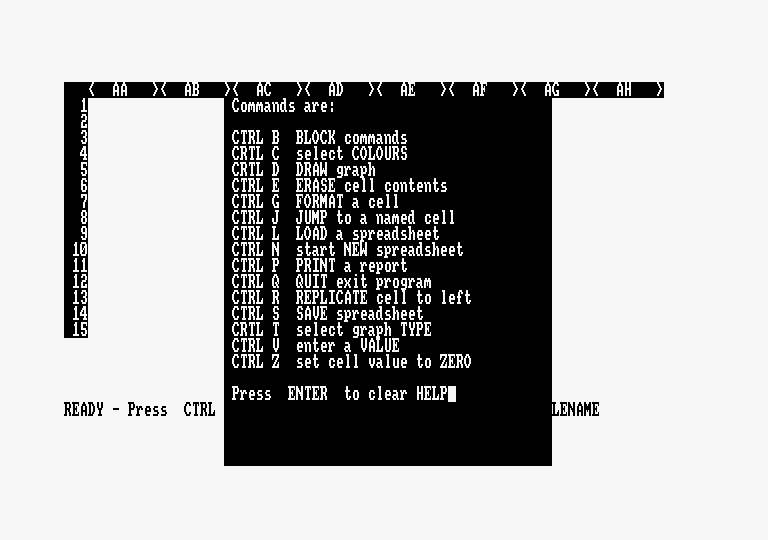 
On line
Micrograph is the missing fourth program in Amsoft's suite of business programs that run under CP/M. The reason for its delay is easy to guess - implementing graphics on CP/M, while possible, seriously compromises the portability of the product and requires machine specific coding. Still it's a nice release and probably worth the wait. The first graph utility for the CPC was Camel's Grasp and in comparison, since both are limited by the resolution of the CPC it is not surprising that the quality of the graphs drawn are very similar. Micrograph has a slide show facility and offers more graph drawing options than Grasp, but the latter lets you shrink and superimpose the graphs drawn to produce some highly complex composite screens. Grasp is also very much cheaper. However, Micrograph wins out with its data handling potential. The program has a mini version of the Microspread spreadsheet built in. This is unable to use the complex formula definitions found in Microspread but once the data is entered you can manipulate it to produce different graphs by extensive block and cell control commands. Files produced by Microspread can be loaded into Micrograph, although unfortunately once used by the latter they cannot be saved again in a format readable by Microspread. There are options to print the spreadsheet or dump the graphs to an Epson printer or the Amstrad DMP-1. My only reservation is that if you wanted to spend anything up to £100 on producing business graphics you may need the higher quality output possible only via a pen plotter option and it is this fudged approach that is perhaps the package's weakest point. Tony Kendle, PopularComputingWeekly851219
| ★ AMSTRAD CPC ★ DOWNLOAD ★ |
|
CPCrulez[Content Management System] v8.732-desktop/c
Page créée en 052 millisecondes et consultée 2091 foisL'Amstrad CPC est une machine 8 bits à base d'un Z80 à 4MHz. Le premier de la gamme fut le CPC 464 en 1984, équipé d'un lecteur de cassettes intégré il se plaçait en concurrent du Commodore C64 beaucoup plus compliqué à utiliser et plus cher. Ce fut un réel succès et sorti cette même années le CPC 664 équipé d'un lecteur de disquettes trois pouces intégré. Sa vie fut de courte durée puisqu'en 1985 il fut remplacé par le CPC 6128 qui était plus compact, plus soigné et surtout qui avait 128Ko de RAM au lieu de 64Ko. |
|
| 